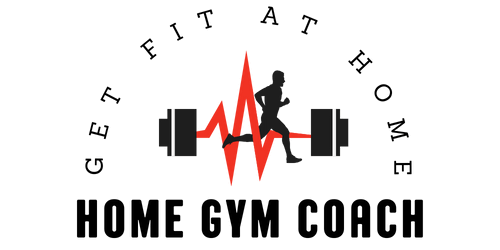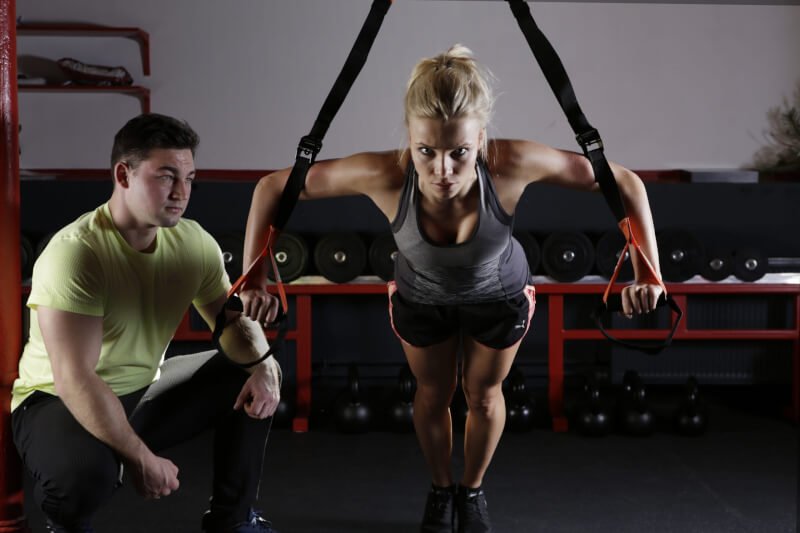Are you looking for the perfect stretches to incorporate into your home gym routine? Look no further! In this article, we will explore the best stretches that will help you improve flexibility, prevent injuries, and enhance your overall workout experience. Whether you’re a seasoned athlete or a beginner, these stretches will ensure that you start your fitness journey on the right foot, or should I say, the left foot! So, grab your yoga mat and get ready to stretch your way to a healthier you.

Importance of stretching in a home gym routine
Stretching is a crucial component of any exercise routine, including one done in a home gym setting. Not only does stretching help improve flexibility, but it also plays a vital role in preventing injuries, reducing muscle soreness, and enhancing overall performance. With various stretching exercises targeting different parts of the body, you can ensure that your home gym routine is well-rounded and effective. In this article, we will explore the best stretches to include in your home gym routine, divided into specific sections focusing on upper body, lower body, core, full body, dynamic stretching, pre-workout stretches, post-workout stretches, and stretches for specific exercises. By incorporating these stretches into your routine, you’ll reap the benefits of improved flexibility and reduced risk of injury.
1. Upper body stretches
1.1 Neck stretches
Neck stretches are essential for relieving tension and improving flexibility in the neck and shoulder area. To perform a simple neck stretch, sit comfortably with your spine erect. Slowly tilt your head to one side, bringing your ear towards your shoulder. Hold this stretch for 15-30 seconds, feeling the gentle stretch along the side of your neck. Repeat on the other side. Another effective neck stretch involves tilting your head forward and backward while maintaining a relaxed posture. These stretches can be performed both before and after upper body exercises, such as shoulder presses or chest presses, to prepare the muscles and prevent stiffness.
1.2 Shoulder stretches
Shoulder stretches are crucial for maintaining healthy shoulder joints and improving range of motion. One common and effective shoulder stretch is the shoulder cross stretch. Start by standing or sitting tall with your shoulders relaxed. Place one arm across your chest, using the opposite arm to gently press the stretching arm closer to your body. Hold for 15-30 seconds and repeat on the other side. This stretch targets the muscles in the back of the shoulder and can be beneficial before exercises like overhead presses or rows.
1.3 Chest stretches
Chest stretches are important for counteracting the effects of prolonged sitting and hunching over during daily activities. A popular chest stretch is the doorway stretch. Stand in a doorway with your arms positioned on either side of the doorframe, slightly below shoulder height. Step forward with one foot, allowing your body to lean forward and feel the gentle stretch in the chest and shoulders. Hold for 15-30 seconds and repeat as needed. This stretch is particularly beneficial prior to exercises like bench presses or push-ups, as it helps open up the chest and improve range of motion.
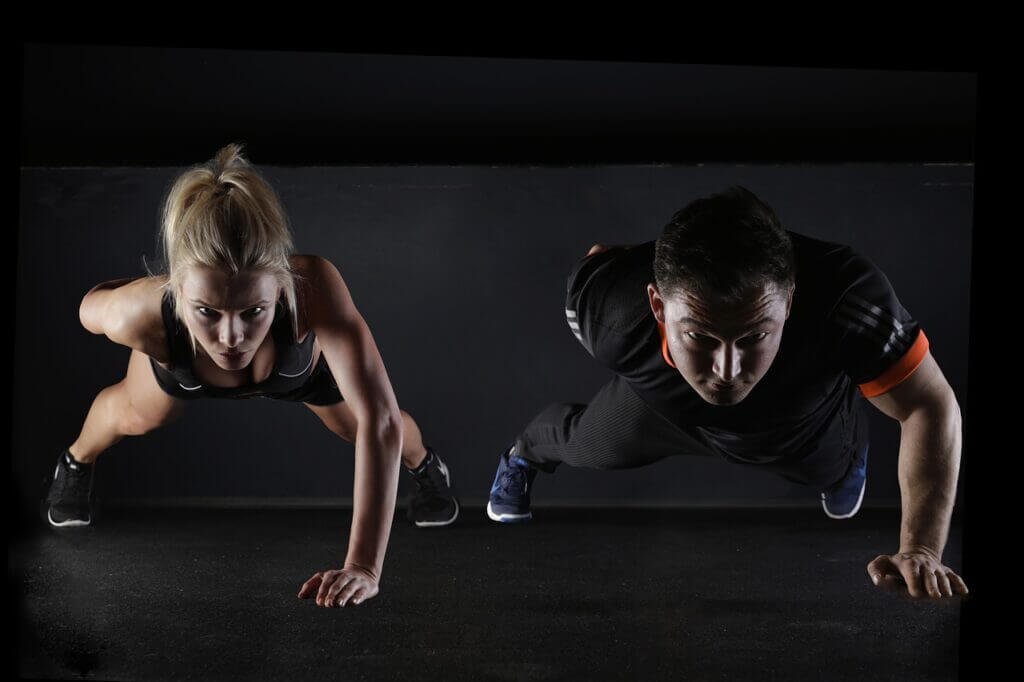
2. Lower body stretches
2.1 Hamstring stretches
The hamstrings, a group of muscles located at the back of the thigh, can often be tight and require regular stretching. One effective hamstring stretch is the standing forward bend. Stand with your feet hip-width apart and slowly bend forward from your hips, keeping your back straight. Allow your hands to hang towards the floor or rest them on your shins, whichever is most comfortable for you. Hold this stretch for 15-30 seconds, feeling the gentle lengthening in the back of your legs. This stretch can be performed before exercises like squats or deadlifts to prepare the hamstrings for movement.
2.2 Quadriceps stretches
The quadriceps, located in the front of the thigh, are active during movements like walking, running, and squatting. To stretch the quadriceps, stand tall and grab your ankle or foot with your hand, pulling your heel towards your glutes. Keep your knees close together and maintain an upright posture. Hold the stretch for 15-30 seconds, feeling the tension release in the front of your thigh. Quadriceps stretches are particularly helpful before exercises like lunges or leg extensions.
2.3 Calf stretches
The calf muscles play a crucial role in walking and other lower body movements. To stretch your calf muscles, stand facing a wall with one leg positioned slightly behind you. Lean forward, pressing your hands against the wall, while keeping both heels on the ground. You should feel the stretch in your calf muscle of the leg positioned behind you. Hold for 15-30 seconds and repeat on the other side. Calf stretches are beneficial before exercises like calf raises or jumping jacks, as they help prevent cramping and improve flexibility in the lower leg.
3. Core stretches
3.1 Abdominal stretches
Stretching the abdominal muscles helps improve posture, relieve lower back pain, and enhance core stability. One effective abdominal stretch is the standing side bend. Stand with your feet hip-width apart and place one hand on your hip. Extend the other arm overhead, reaching towards the opposite side. Feel the gentle stretch in your side and hold for 15-30 seconds. Repeat on the other side. This stretch is particularly useful before exercises like planks or Russian twists, as it helps activate the oblique muscles and prepare the core for movement.
3.2 Lower back stretches
Stretching the lower back is crucial for maintaining spinal health and preventing discomfort or pain. A popular lower back stretch is the seated spinal twist. Begin by sitting on the floor or a mat with your legs extended in front of you. Cross one leg over the other, placing your foot flat on the ground outside the opposite knee. Twist your torso towards the crossed leg, using your arm or elbow to provide gentle resistance and deepen the stretch. Hold for 15-30 seconds and repeat on the other side. Lower back stretches are beneficial before exercises like deadlifts or back extensions, as they help improve mobility and prevent strain.
3.3 Hip stretches
Stretching the hip muscles is important for maintaining hip mobility and preventing tightness or discomfort. One effective hip stretch is the figure-four stretch. Sit on the edge of a chair or mat, crossing one ankle over the opposite knee. Gently press down on the knee of the crossed leg, feeling the stretch in your hip. Hold for 15-30 seconds and repeat on the other side. This stretch can be performed before exercises like squats or lunges, as it helps loosen the hip muscles and improve range of motion.
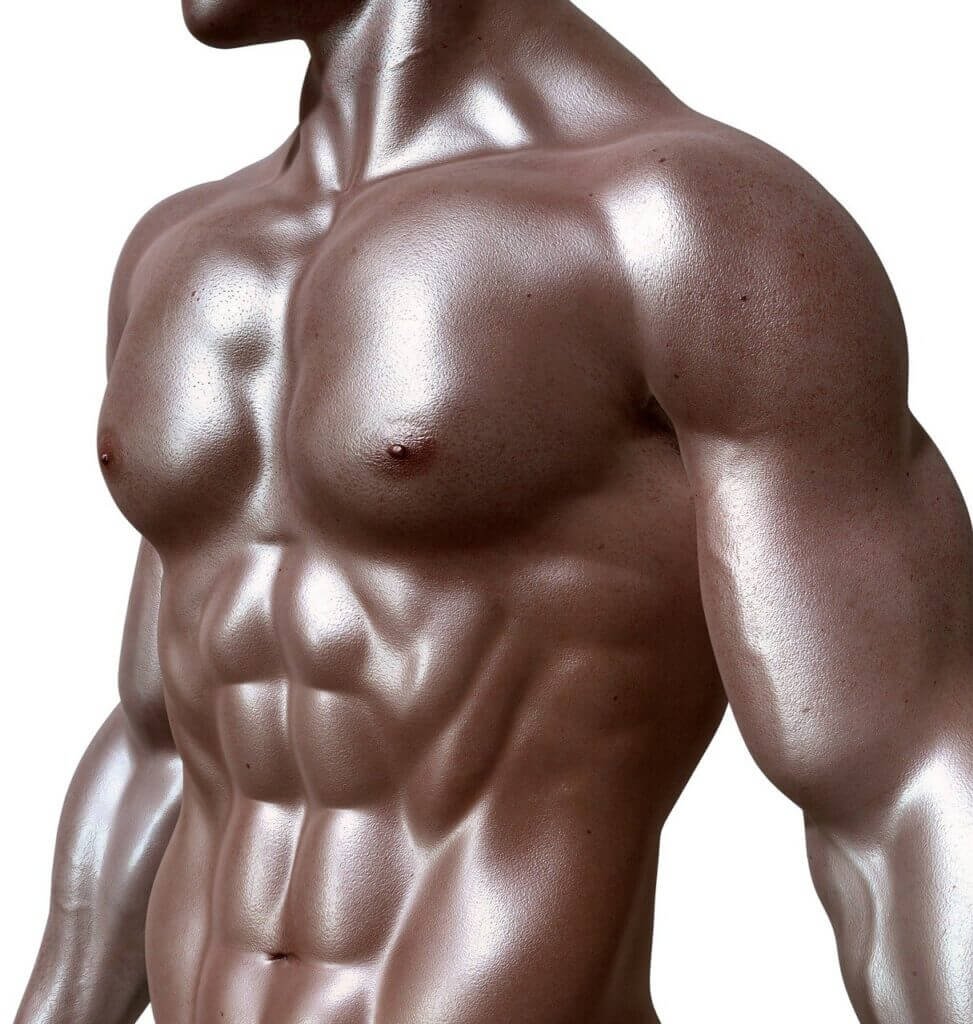
4. Full body stretches
4.1 Cat-Cow stretch
The Cat-Cow stretch is a yoga-inspired stretch that targets the entire spine and helps improve flexibility and mobility. Start on all fours with your hands beneath your shoulders and your knees beneath your hips. As you inhale, arch your back and lift your head and tailbone towards the ceiling, creating a concave curve in your spine (Cow pose). As you exhale, round your back and tuck your chin towards your chest, creating a convex curve in your spine (Cat pose). Repeat this flow for 5-10 cycles, moving with your breath. The Cat-Cow stretch is an excellent warm-up for any exercise routine, as it activates the core and mobilizes the spine.
4.2 Standing forward bend
The standing forward bend is a full body stretch that primarily targets the hamstrings and lower back while also providing a gentle stretch to the shoulders and neck. Start by standing with your feet hip-width apart and slowly bend forward from your hips, allowing your hands to hang towards the floor. Relax your upper body and let the weight of your head and arms gently pull you further into the stretch. You can keep your knees slightly bent if necessary to avoid excess strain. Hold the stretch for 15-30 seconds, feeling the tension release in your hamstrings and lower back muscles. The standing forward bend is a great stretch to do after lower body exercises like squats or lunges.
4.3 Downward Facing Dog
Downward Facing Dog is a well-known yoga pose that stretches the entire body, including the hamstrings, calf muscles, shoulders, and back. Start on your hands and knees, with your hands slightly in front of your shoulders and your knees directly beneath your hips. Lift your knees off the ground, straighten your legs, and extend your hips towards the ceiling, forming an inverted V-shape with your body. Push your hands firmly into the ground and press your heels towards the floor while keeping your head between your arms. Hold the pose for 15-30 seconds, feeling the stretch along the back of your legs and spine. Downward Facing Dog is an excellent full body stretch to include in your routine, as it enhances flexibility and strengthens the upper body.
5. Dynamic stretching
5.1 Arm circles
Dynamic stretching is a form of stretching that involves controlled, repetitive movements to warm up the muscles and increase blood flow. Arm circles are a simple yet effective dynamic stretch for the upper body. Stand tall with your feet shoulder-width apart and extend your arms out to the sides. Begin making small circles with your arms, gradually increasing the size of the circles. After a few rotations, reverse the direction of the circles. Continue for 15-30 seconds, feeling the muscles in your shoulders and upper back warm up. Arm circles are an ideal warm-up exercise before any upper body workout.
5.2 Leg swings
Leg swings are a dynamic stretching exercise that targets the muscles of the hips, hamstrings, and quadriceps. Stand next to a wall or hold onto a sturdy object for balance. Swing one leg forward and backward in a controlled manner, maintaining a relaxed and upright posture. After a few swings, switch to swinging the leg side to side. Perform 10-15 swings on each leg, feeling the muscles gradually loosen and warm up. Leg swings are particularly beneficial before lower body exercises like lunges or squats, as they prepare the hips and legs for movement.
5.3 Torso twists
Torso twists are dynamic stretches that engage the muscles of the core, back, and shoulders. Stand with your feet hip-width apart and your arms extended out to the sides. Rotate your torso to one side, bringing your opposite hand towards the back, and then rotate to the other side, bringing your opposite hand towards the front. Continue alternating for 10-15 repetitions, feeling the muscles in your core engage and warm up. Torso twists are an excellent warm-up exercise before any full body workout, as they increase flexibility and range of motion.
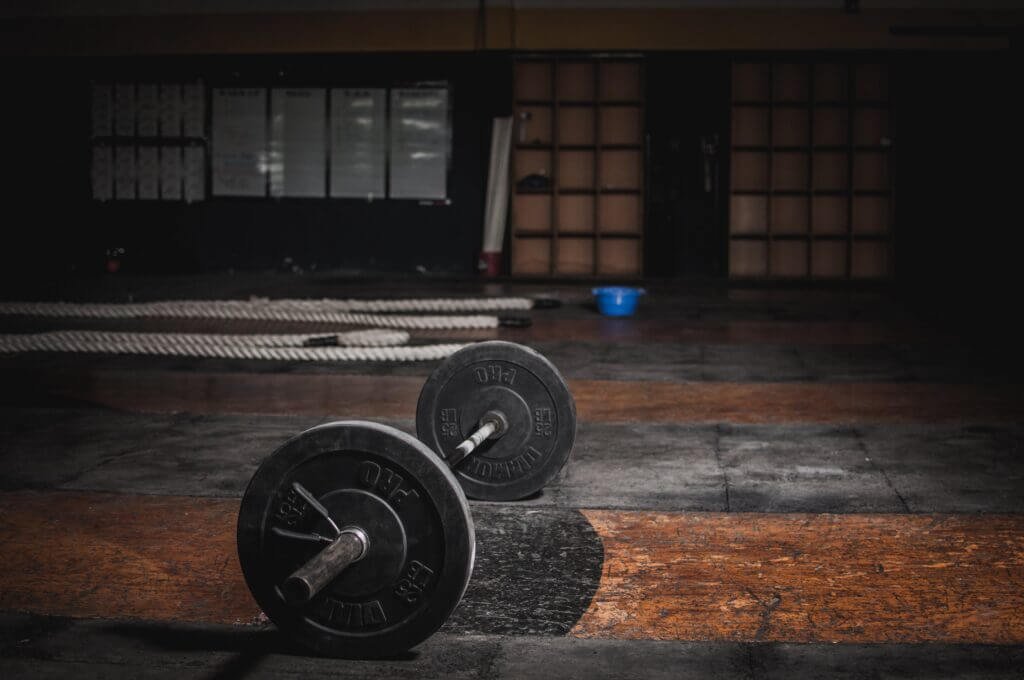
6. Pre-workout stretches
6.1 Arm and shoulder warm-up
Before engaging in upper body exercises, it is crucial to warm up the arm and shoulder muscles. One effective pre-workout stretch for the arms and shoulders is the arm cross stretch. Stand tall with your feet hip-width apart and extend both arms out to the sides. Cross one arm across your chest, using the opposite arm to gently press the stretching arm towards your body. Hold for 15-30 seconds and repeat on the other side. This stretch prepares the muscles for movements like bicep curls or tricep extensions, reducing the risk of strain and injury.
6.2 Gentle leg swings
To warm up the lower body and prepare for exercises such as squats or lunges, gentle leg swings are an effective pre-workout stretch. Stand next to a wall or hold onto a sturdy object for balance. Swing one leg forward and backward, gradually increasing the range of motion without forcing it. After a few swings, switch to swinging the leg side to side. Perform 10-15 swings on each leg, feeling the muscles loosen and the joints mobilize. Gentle leg swings increase blood flow to the lower body and improve flexibility, reducing the likelihood of muscle imbalances or strains.
6.3 Hip circles
The hip joint is involved in various lower body movements, and it is crucial to warm up this area before engaging in exercises like hip thrusts or squats. Hip circles are an effective pre-workout stretch that targets the muscles surrounding the hips. Stand with your feet hip-width apart and place your hands on your hips. Begin making circles with your hips, moving in one direction and then reversing the movement after a few rotations. Perform 10-15 circles in each direction, feeling the joints and muscles in your hips warm up and become more flexible. Hip circles help optimize hip mobility and prevent injury during lower body exercises.
7. Post-workout stretches
7.1 Shoulder and chest stretches
After an intense upper body workout, it is essential to stretch the shoulders and chest to alleviate tension and reduce the risk of muscle tightness. One effective post-workout stretch is the doorway stretch. Stand in a doorway with your arms positioned on either side of the doorframe, slightly below shoulder height. Step forward with one foot, leaning into the doorframe and feeling the gentle stretch in your chest and shoulders. Hold for 15-30 seconds and repeat as needed. This stretch helps release tension in the muscles after exercises like bench presses or shoulder presses.
7.2 Seated hamstring stretch
During a lower body workout, the hamstrings may become tight and fatigued. To relieve tension and promote recovery, a seated hamstring stretch can be performed post-workout. Sit on the floor with your legs extended in front of you and your back straight. Lean forward from your hips, reaching towards your feet with your hands. If you cannot reach your feet, you can use a strap or towel for assistance. Feel the gentle stretch in the back of your legs and hold for 15-30 seconds. The seated hamstring stretch aids in muscle recovery and improves flexibility after exercises like squats or deadlifts.
7.3 Child’s pose
Child’s pose is a restorative yoga pose that stretches the muscles of the back, shoulders, and hips, providing a gentle release after a full body workout. Start on all fours, with your hands beneath your shoulders and your knees beneath your hips. Gradually sit back on your heels, extending your arms forward and allowing your forehead to rest on the ground. Relax your whole body and feel the stretch in your back and shoulders. Hold this pose for 15-30 seconds, taking deep breaths to enhance relaxation. Child’s pose is an excellent way to cool down after a workout and promote full-body recovery.

8. Stretching for specific exercises
8.1 Stretches for squats
Squats engage numerous muscle groups, including the quadriceps, hamstrings, glutes, and hip flexors. To properly prepare these muscles for squats and prevent injury, specific stretches can be included in your routine. One effective stretch is the deep squat hold. Stand with your feet wider than shoulder-width apart and slowly lower your body down into a deep squat position. Keep your heels on the ground and your back straight. Hold this position for 15-30 seconds, feeling the stretch in your hips, glutes, and thighs. Deep squat holds promote hip mobility and enhance squat performance.
8.2 Stretches for deadlifts
Deadlifts primarily target the muscles of the back, hamstrings, and glutes. To optimize performance and prevent strain during deadlifts, incorporating stretches for these specific muscle groups is beneficial. One effective stretch is the standing hamstring stretch. Stand tall with your feet hip-width apart and extend one leg forward. Flex your toes towards your body and hinge forward from your hips, reaching towards your toes. Feel the stretch in the back of your leg and hold for 15-30 seconds. Standing hamstring stretches improve flexibility in the hamstrings and reduce the risk of injury during deadlifts.
8.3 Stretches for push-ups
Push-ups engage the muscles of the chest, shoulders, triceps, and core. To prepare these muscles for push-ups and prevent strain, it is essential to include specific stretches in your routine. One effective stretch is the chest opener. Stand tall with your feet hip-width apart and interlace your fingers behind you. Gently straighten your arms and lift your hands away from your body, feeling the stretch in your chest and shoulders. Hold for 15-30 seconds. Chest openers improve flexibility in the chest muscles and enhance push-up performance.
10. Incorporating stretching into a routine
10.1 Determining frequency
The frequency at which you incorporate stretching into your home gym routine depends on your individual needs and goals. However, for optimal results, it is recommended to include stretching exercises at least two to three times per week. You can perform a full body stretching routine on non-consecutive days or divide the stretches into upper body, lower body, and core stretches to target specific areas on different days. Experiment with different frequencies and listen to your body to find the right balance of stretching that keeps you feeling flexible and prevents muscle imbalances or injuries.
10.2 Duration of stretches
The duration of each stretch is equally important for reaping the benefits of improved flexibility and injury prevention. Aim to hold each stretch for 15-30 seconds, allowing the muscles to lengthen and release tension. If a stretch feels particularly tight or uncomfortable, you can try easing into it gradually or using props like straps or blocks for assistance. As you become more flexible over time, you can gradually increase the duration of each stretch to deepen the stretch and continue challenging your muscles.
10.3 When to stretch
The timing of your stretching routine within your home gym routine is essential for maximizing its benefits. It is generally recommended to perform stretching exercises after a proper warm-up, such as a light cardio activity or dynamic stretching. This helps increase blood flow to the muscles, raise your body temperature, and prepare the muscles for stretching. After completing your workout, it is also important to include post-workout stretching to aid in muscle recovery and reduce muscle soreness. By incorporating stretching at the right moments, you can optimize its effects and enhance the overall effectiveness of your home gym routine.
In conclusion, stretching plays a vital role in a home gym routine. By incorporating upper body stretches, lower body stretches, core stretches, full body stretches, dynamic stretching, pre-workout stretches, post-workout stretches, and stretches for specific exercises, you can improve flexibility, prevent injuries, and enhance your overall performance. Remember to determine the frequency and duration of each stretch based on your individual needs, and always prioritize proper warm-up and cool-down before and after your workouts. With a comprehensive stretching routine, you can make the most out of your home gym sessions and reap the physical and mental benefits of a well-rounded exercise routine.
